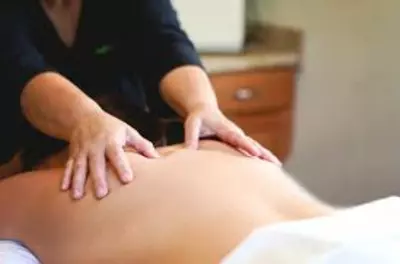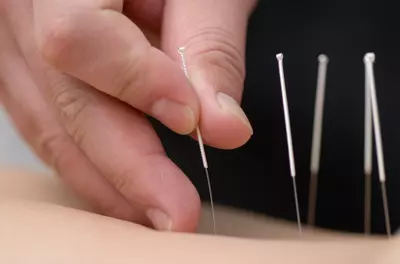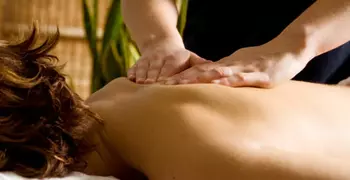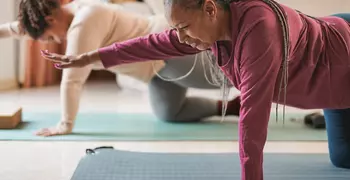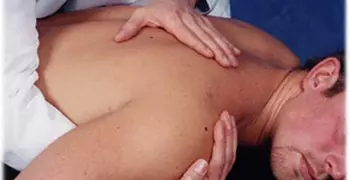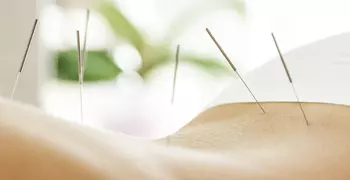Arthritis
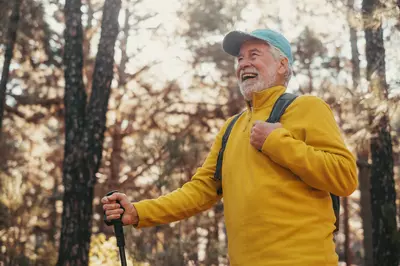
What is arthritis?
Arthritis is a general term that literally means "inflammation of the joints." The most common form of arthritis is osteoarthritis, which is caused by wear and tear on joint cartilage. Another form is rheumatoid arthritis, which causes joint inflammation due to an immune system disorder. This section only addresses osteoarthritis.
Osteoarthritis affects nearly 27 million Americans and is the most common cause of long-term disability. It is caused by degeneration of the cartilage in joints. Osteoarthritis, also called degenerative joint disease, not only reduces elasticity and lubrication in the joints, but weakens muscles and loosens ligaments. This degeneration of cartilage can occur in any joints, but is most common in the knees, hips, hands, neck, and lower back.
The biggest risk factors for osteoarthritis are simply aging and joint use, but osteoarthritis can also be due to obesity, injury, nutritional factors, metabolic disorders, and genetics.
Most people over age 60 have osteoarthritis to some degree, but its severity varies. Even people in their 20s and 30s can get osteoarthritis. In people over 50, more women than men get osteoarthritis.
Symptoms of osteoarthritis most often develop gradually and include:
- Joint aching and soreness, especially with movement
- Pain after overuse or after long periods of inactivity
- Bony enlargements in the middle and end joints of the fingers (which may or may not be painful)
- Joint swelling and joint fluid accumulation
The degree of arthritis seen on x-ray studies or arthroscopy doesn't directly correlate with the level of pain or disability someone experiences.
What are the conventional treatments for arthritis?
Conventional treatments for arthritis begin with protecting the joint from progressive joint degeneration, increasing joint movement, and providing pain control so that the individual can maintain a healthy, active lifestyle. When pain and disability from arthritis increase, surgery is an option.
Treatments that focus on pain control include:
- Acetaminophen. The American Pain Society (APS) has recommended the use of acetaminophen (Tylenol) for mild to moderate arthritic pain.
- Nonsteroidal anti-inflammatory drugs (NSAIDs) are the preferred drugs for moderate to severe pain. When NSAIDS are used as long-term therapy for arthritis there is a risk of gastrointestinal bleeding.
- Narcotics and opiate analgesics can be safely used in treating patients with severe arthritic pain resistant to nonopioid medications.
- Joint Injections. Corticosteroids or hyaluronic acid medications can be injected into the joint.
When pain from arthritis cannot be controlled with medication, surgery is sometimes an option. The most common surgeries done for arthritis are:
- Arthroscopy. Arthroscopic surgery is sometimes recommended to repair or shave the cartilage or remove floating pieces of cartilage that may be causing joint pain,
- Total Joint Replacement. In individuals with advanced osteoarthritis, chronic pain and marked limitation in joint mobility, total joint replacements surgery can be very effective in helping an individual resume an active lifestyle.
What lifestyle changes are recommended for arthritis?
Lifestyle changes that protect the joint from progressive cartilage degeneration include:
Exercise
Studies done on people with mild to moderate osteoarthritis consistently show that regular exercise, including aerobics, strength training, and range of motion/flexibility, improves pain, increases walking tolerance, and decreases self-assessed disability.
This especially applies to those with knee arthritis. Using a cane, walker, or wedged insoles to help distribute the weight on joints can be helpful.
Staying physically active when you have arthritis is important because arthritis pain is typically worse after excessive activity as well as inactivity.
Eliminating Certain Activities
It is important to eliminate activities that cause joint wear and tear, such as running and high-impact aerobics.
Weight Loss
Optimizing weight to reduce stress on the joints is important for both prevention and for decreasing symptoms and progression of disease. Losing weight helps reduce stress and strain on joints. In fact, for every pound of weight loss there is a four pound reduction in the load exerted on the knee.
In one study, a 10% weight loss led to a 28% improvement in function. Weight loss appears to alleviate more than just direct mechanical stress, because lowering body mass also improves the course of disease in the hand and wrist joints. Also, diabetics experience more severe osteoarthritis than those without diabetes, so if you have type 2 diabetes, losing weight could improve your arthritis both on its own and by possibly eliminating your diabetes.
Diet
An anti-inflammatory diet—that is, one low in saturated fats like red meat, dairy, and fried food—may help reduce the inflammatory process in the joints. Increasing Omega-3 fatty acids may also help this balance. Some individuals may have symptomatic improvement with the elimination of nightshades (tomatoes, potatoes, eggplant, peppers, tobacco). A 2-3 week trial is worth considering.
What are some integrative therapies and healing practices to consider for arthritis?
In several US survey studies, many older patients with arthritis reported using complementary and alternative treatments. The most commonly used treatments were massage therapy (57%) and chiropractic (21%). The use of complementary therapies for arthritis was most common among those who considered themselves in poorer health and who also used traditional healthcare resources more.
Acupuncture
Multiple studies have been done on the use of acupuncture for the pain of osteoarthritis. In a recent trial of almost 600 patients with knee arthritis, 26 weeks of acupuncture were compared to education sessions. Those receiving acupuncture showed significant improvement in function at 8 weeks, and in pain reduction at 26 weeks.
Mind-Body Practices and Stress Reduction
Mindfulness-Based Stress Reduction (MBSR) is a program of meditation and gentle yoga that has been scientifically validated. It is currently used in more than 200 hospitals and medical centers to complement the medical management of chronic pain and stress-related disorders. Research has studied individuals with many different kinds of pain (not just arthritis) and shown dramatic reductions in pain levels and an enhanced ability of individuals to cope with pain that may not go away.
Yoga is a holistic discipline, including mental, physical, and breathwork practices. A pilot study has shown that yoga may provide a feasible treatment option for obese patients over 50 years old and offers potential reductions in pain and disability caused by knee osteoarthritis.
Manual Therapies
The level of effectiveness of manual therapy with arthritis is under-researched; however, there are clinical reports of effectiveness, and some early studies are very promising.
One study of over 100 patients with osteoarthritis in the hip compared a five-week manual therapy program, including manipulations and joint mobilization, to an exercise program. Eighty-one percent of individuals had general perceived improvement after manual therapies, while only 50% experienced that in the exercise group. Patients in the manual therapy group had significantly better outcomes on pain, stiffness, hip function, and range of motion. These improvements lasted through at least 29 weeks.
Osteopathy
There have been limited studies on the effectiveness of osteopathic manipulation alone. However, studies of osteopathy combined with conventional medical care show that the combination was more effective than conventional medical care alone for individuals with chronic pain syndromes from degenerative joint disease.
Massage Therapy
Early studies have shown massage therapy to be efficacious in the treatment of osteoarthritis of the knee, though long-term-costs studies have not yet been done.
Thermal Therapy
Ice massage can be used to improve range of motion and strength of the knee, and improve function. Cold packs may be used to decrease swelling.
Botanicals and Supplements
There are some naturally occurring substances with anti-inflammatory effects and a lower risk of gastrointestinal bleeding than NSAIDs. As with any medications, these should ideally be used for limited periods of healing, not for indefinite, long-term use.
Typical doses for each botanical are indicated below. However, you should talk with your healthcare provider before adding botanicals to your health regimen and ask about the right dosage for you.
- Glucosamine and chondroitin are substances that occur naturally in cartilage. Several studies have shown the benefit of oral glucosamine in osteoarthritis. In a systematic review, glucosamine was found to work as well or better than NSAIDS. (Although other studies have found it less effective.) Often glucosamine is used in combination with chondroitin, although studies are not clear as to whether there is added symptomatic improvement by adding chondroitin, there is suggestion that it may retard progression of the disease. These may be disease modifying agents, rather than just pain suppressing. Doses are 500 mg of glucosamine sulfate three times a day, with or without chondroitin sulfate 400 mg three times/day. A minimum of a 6-week trial should be completed before symptomatic assessment is made.
- Curcumin is the active anti-inflammatory agent found in the spice turmeric. A large double-blind study demonstrated that curcumin was as effective as a powerful anti-inflammatory drug in reducing pain, swelling and stiffness in rheumatoid arthritis patients, and has also been shown to be effective in the treatment of postsurgical inflammation, so it is also likely to be helpful in osteoarthritis as well. A 95-percent standardized extract of curcumin derived from turmeric is recommended. The daily dosage to consider is 400-600mg, taken one to three times per day, when not taken in combination with other products. Theoretically, it should not be used with prescription blood thinners, but human clinical trials to evaluate bleeding risk have not been done.
- Bromelain, extracted from plants in the bromeliaceae family (such as pineapple), contains anti-inflammatory enzymes that have the proven ability to suppress the inflammation and pain of rheumatoid arthritis and osteoarthritis, sports injuries, and other joint inflammatory conditions. Bromelain also helps to break down fibrin, thereby minimizing local swelling. The usual dosage is 400mg, one to three times per day (a lower dosage can be used as part of a combination anti-inflammatory formulation). Bromelain should not be used with prescription blood thinners.
- S-Adenylmethionine (SAMe) is another naturally occurring molecule in the body, and has been found to stimulate cartilage growth and repair. A deficiency of SAMe in the joint may contribute to cartilage degeneration. It has been compared to ibuprofen, and found to be as effective and better tolerated. Dosage range is 400 to 1600 mg daily in divided doses; with 600 mg twice a day being most common. SAMe works slower than NSAIDs and should be tried for at least 4 weeks.
- Methyl Sulfonyl Methane (MSM) has a metabolite that is found naturally in the human body, and is commonly found in green vegetables, garlic, onions, fruits, grains, algae, and milk. It is an important source of sulfur, required for the synthesis of cartilage. Animal studies suggest MSM decreases inflammatory joint disease, but human studies have not been done. Usual dose is 1000 to 3000 mg three times a day. There may be side effects of nausea, diarrhea, and headaches.
How to integrate complementary therapies and healing practices in arthritis
Many people who suffer from arthritis experience either severe chronic pain or moderate chronic pain with occasional episodes of severe pain. Since the degree of pain and disability is highly influenced by an individual's perception of pain and not necessarily correlated with the degree of cartilage degeneration, a treatment plan that includes both conventional and integrative therapies can be very effective. As always, you should make sure that you communicate and share your treatment plan with all of your care providers.
Since obesity increases the risk for osteoarthritis of the knee and hip, maintaining ideal weight or losing excess weight may help prevent osteoarthritis of the knee and hip or decrease the rate of progression once osteoarthritis is established.
Acupuncture for pain relief may reduce the need pain medications, such as NSAIDs.
Maintaining activity as much as possible is helpful to delay disability and improve quality of life. A regular exercise program with stretching, strength training, and endurance and aerobic activities is important. Yoga is a good base activity for many people.
A regular meditation or relaxation practice can help you cope with pain, as can a self-reflection practice that honestly addresses emotional awareness and health.
